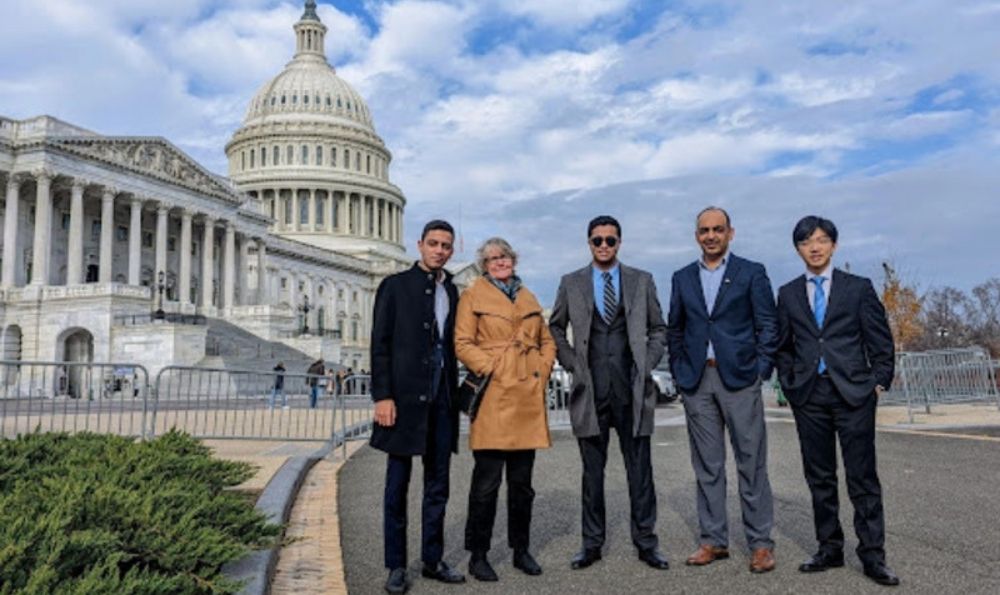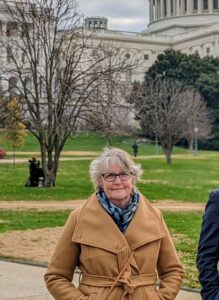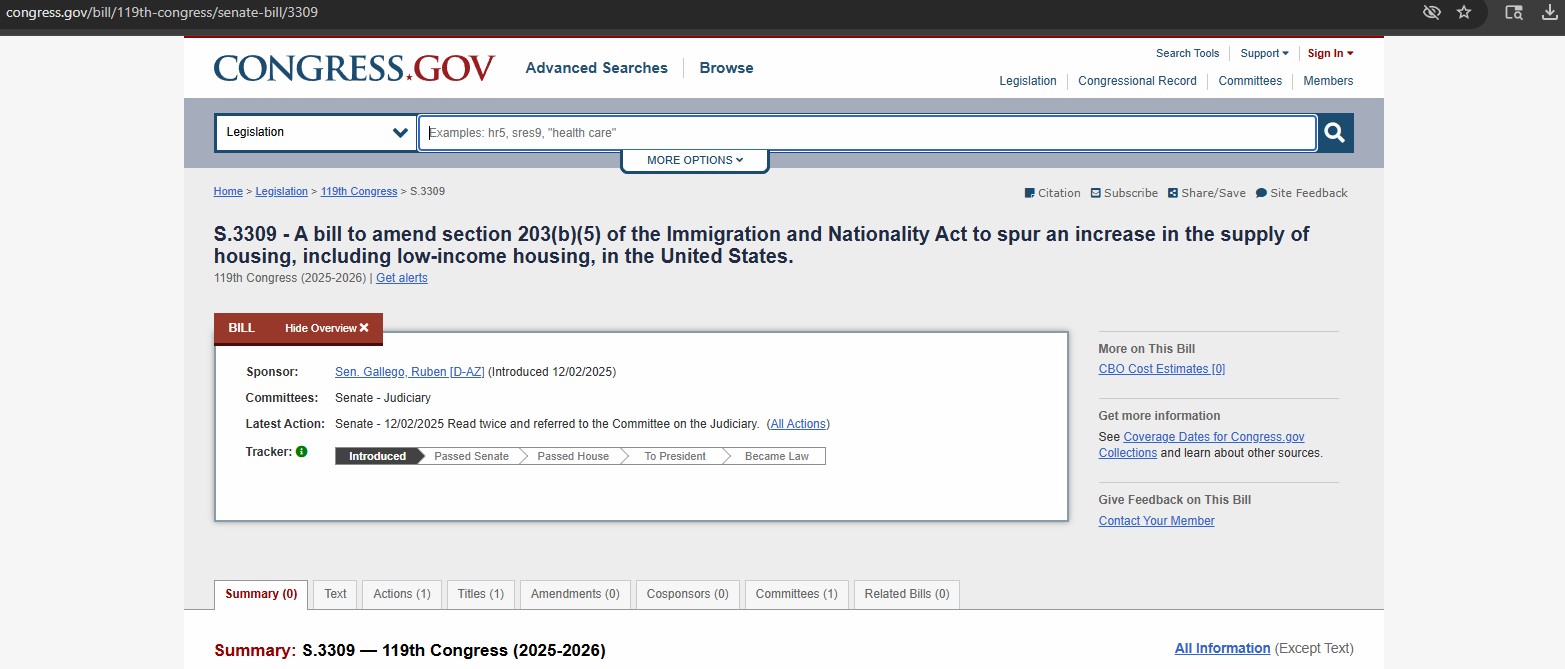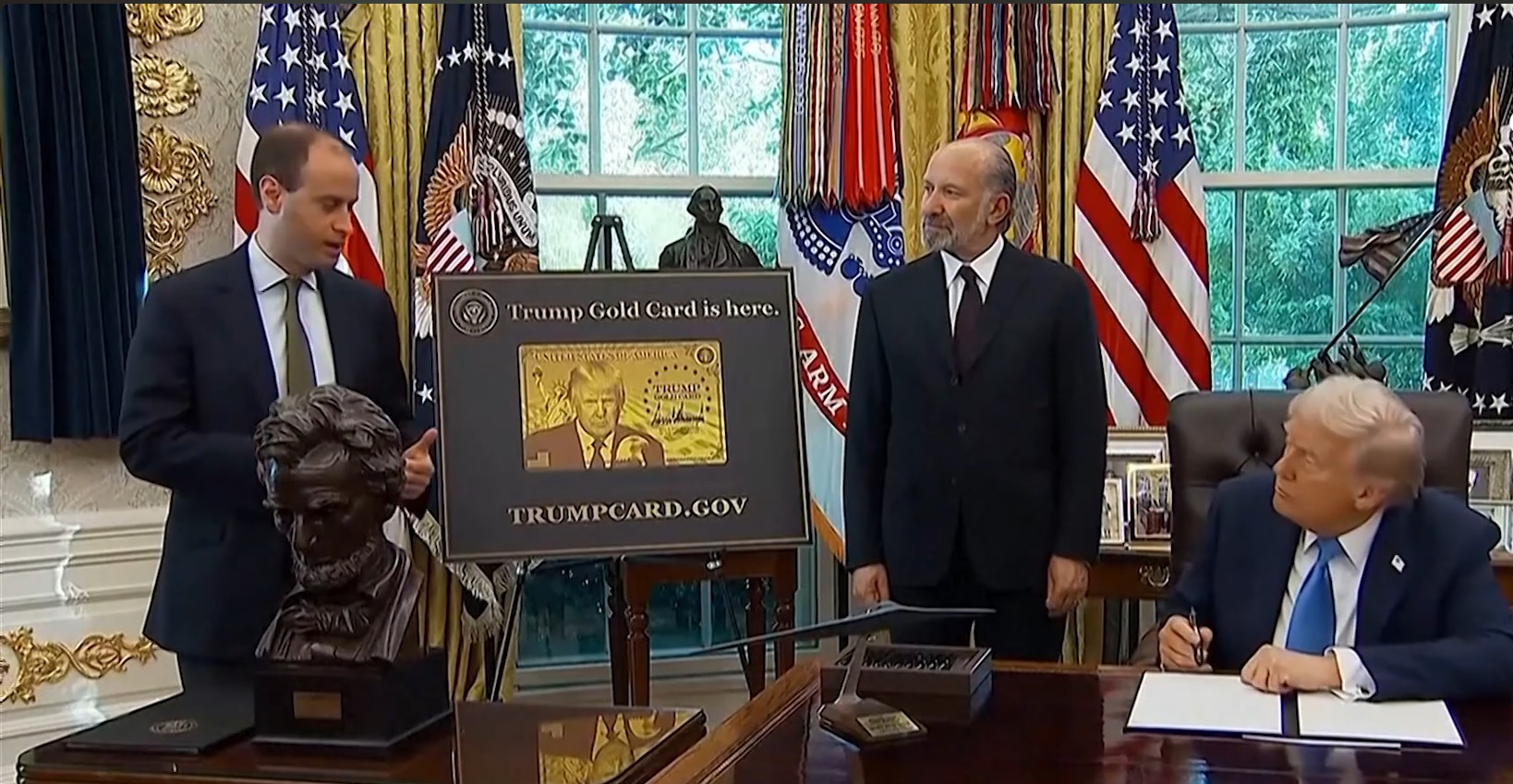Newsletter #7: AIIA Goes to Washington DC
24th December, 2021
AIIA conducted a successful advocacy visit to D.C., engaging with key Congressional offices and shedding light on EB-5 investors' concerns, pushing for the grandfathering initiative and highlighting the impact of the program lapse on American jobs, with plans for further action in the new year.

AIIA recently concluded a three-days-long visit to Washington D.C., where our team met with the specific Congressional offices most crucial to the EB-5 reauthorization process. The visit was facilitated by our D.C.-based lobbyist, the Morrison Public Affairs Group (MPAG). It was a remarkable opportunity for us to speak directly with key staff of the House and Senate on behalf of 30,000+ EB-5 petitioners and their families who remain in limbo during the current program lapse.
It is rare for an immigrant advocacy organization, especially one as young as ours, to gain an audience with lawmakers and their staff in Washington. Our visit was effective not only in the intelligence that we gathered on the progress of congressional negotiations, but in raising awareness and building relationships. We found everyone to be receptive to our message and interests. We know that our organization has gained a seat at the table where decisions concerning our future will be discussed. To our constituents – your voices are being heard.
This newsletter details the critical information we have gained and the strategy we are pursuing in the new year in light of what we now know.
A Statement From Katherine Bleach, an EB-5 Investor from the U.K.

The American Immigrant Investor Alliance is my voice to Congress. As an investor who is living outside the U.S, the lapse in the program has felt like the last straw after discovering the realities about USCIS processing times, and then the COVID-related consular closures. It is hard to get a straight answer from my regional center or EB-5 project broker as to what the real situation is with regards to reauthorization.
So, I went with the Alliance to speak directly to congressional staff. They listened to our concerns, and many of the people we spoke to said that it was the first time they had heard directly from investors who have participated in this program. We received real answers to our questions, some of which we have shared with you below. Our full notes from the meetings have been shared privately with our donors.
I ask all of you reading this: please share this newsletter with other EB-5 investors. There are at least 30,000+ Regional Center investor applications at risk so please add your voice to ours.
Who’s Who – Our Meetings With Decision Makers
Despite our visit spanning only a few days, we met with the offices of several of the members of Congress most involved with EB-5, as well as leaders of the two offices that are critical to the program’s reauthorization: the House and Senate Judiciary Committees.
We met with and spoke to both Betsy Lawrence – Immigration Chief Counsel of the House Judiciary Committee – and Drew Robinson – Senior Counsel of the Senate Judiciary Committee. Additionally, we met with the offices of:
- Sen. John Cornyn (R-TX)
- Sen. Lindsey Graham (R-SC)
- Sen. Mike Rounds (R-SD)
- Sen. Cynthia Lummis (R-WY)
- Sen. Chris Murphy (D-CT)
- Rep. Michelle Steel (R-CA)
- Rep. Drew Ferguson (R-GA)
- Rep. Sylvia Garcia (D-TX)
What We Learned – the Status of Reauthorization
The two most important takeaways from our meetings, relative to the status of reauthorization, are:
- There is no sense of urgency in Congress for EB-5 authorization and no guarantee that reauthorization will occur by February 18.
- The Grassley-Leahy bill, not the industry consensus reform bill, will likely be the framework for any reauthorization bill that moves forward.
Despite the latest EB-5 industry’s hope of reauthorization by February 18, that timeline is far from a guarantee. In fact, we were informed by a senior staff at Senator. Grassley’s office said that they will get to the EB-5 issue “in the first half of 2022”. What’s more, while there was some hope infused by certain members of the EB-5 industry that Senate Majority Leader, Chuck Shumer (D-NY), would step in to broker a deal on reauthorization, which has not yet happened, and it appears unlikely that he will expend any political capital on the EB-5 issue in the near future.
So, it is simply a fact that support from both Senator Grassley and Senator Leahy is essential for any reauthorization or grandfathering efforts. However, we also learned that the Grassley-Leahy bill, not the industry consensus wish list bill that was sent to congressional offices in September, will be the starting point for any final reauthorization bill. All aspects of regional center reauthorization, including the TEA definitions, investment amounts, and investor-level regulatory issues are all still pending review and negotiations.
Progress to Help the Plight of Existing Investors
While the prospect of waiting an indeterminate number of more months for reauthorization is agonizing, we are confident that our interests will be addressed and we did gather some positive news:
Our grandfathering language, or provisions very similar to it, will be included in any reauthorization bill text going forward.
We have received meaningful assurances from the most influential offices that neither they nor any concerned stakeholders they have heard from have any objection to the language contained in the Foreign Investor Fairness Protection Act (FIFPA) and they recognize grandfathering as one of the pillars upon which the program will be resurrected.
We have made efforts to prevent the USCIS from denying petitions after the New Year.
Surprisingly, many of the offices we spoke with were not aware of the end-of-year deadline with USCIS holding the petitions in abeyance. AIIA emphasized this and they now recognize this as a critical issue. While not all offices could provide commitments to intervene on this matter, we continue to have communications with staffers of the House Judiciary Committee, who have significant influence and ability to intervene on this with the USCIS.
Investor Withdrawals Will Cost American Jobs
One of the most common comments we received was that Congress had never heard directly from investors about how they are affected by the program lapse. Our outreach made a significant impact to address this, and we found Congressional staff to be receptive and willing to engage with AIIA as the sole national organization that represents the interests of 30,000+ EB-5 investors. By forging these relationships, we have established ourselves as an indispensable voice in the dialogue. While we are buoyed by this, we must report that the plight of investors alone will not move members of Congress into action on reauthorization. To bring the sense of urgency that is missing on the Hill, we need to underscore how the lapse in reauthorization is directly harming the constituencies of Congressional members.
To this end, we are pivoting our messaging to focus on how litigation and EB-5 investor withdrawal from projects will stymie growth and result in a loss of American jobs across the country. We know from key Congressional staff that this message has great impact which we can leverage both on the Hill and among constituencies and stakeholders that rely on those jobs.
We need your help to build this message. Please continue to send us your stories with specifics about your Regional Center projects, the jobs they create and the benefits they provide to real communities. We are also interested in hearing about specifics of individuals or groups of investors who are considering, planning to, or are currently in litigation to refund their investment capital. By highlighting the reality that American jobs are at risk, we can bring the sense of urgency for Congress to begin prioritizing the EB-5 issue.
Now, We Must Act
While we continue to give our full support to the EB-5 industry in the effort to get the reform bill ready and passed, we can no longer stand by only in hope. We will know more in the first few weeks of January about the status of reauthorization and whether there is any likelihood that reauthorization will go through by February 18.
In the meantime, we are pursuing a strategy to push the Foreign Investor Fairness Protection Act (FIFPA) as an interim benefit until full reauthorization takes place. We are also leveraging our new lines of communication with Congressional offices on the age-out issue to push for protections of families that have children who are about to age out of eligibility due to this ongoing lapse. We believe that grandfathering, which is an entirely uncontroversial topic that the entire EB-5 industry and Congress alike support, could be the catalyst for greater unanimity within the EB-5 ecosystem.
As we move forward, we will continue to pursue alliances within the EB-5 industry to get reauthorization and/or grandfathering back on track. Next month, we will host a public Zoom town hall-webinar in which we will detail our plan for the new year and how it will be implemented to achieve our goals and protect our constituents.
Our advocacy organization has been firing on all cylinders and we will not stop until investor petitions resume being processed again. So now, more than ever, we need the support of all of our constituents as we march forward. With your help – as your voice – we are committed and confident of achieving the results that we seek in 2022.
A Statement From David, an EB-5 investor from China

There are thousands like me. Your family is probably like mine – I am eligible for an EB-5 investor green card from my parent’s investment.
But this lapse has made my future uncertain. Isn’t yours?
Knowing that my voice is your voice, I volunteered to go to Washington D.C. with the American Immigrant Investor Alliance.
I want to say how special this was for me – as a Chinese person and a Gen-Z. There is wisdom: Seek Truth from Facts. 實事求是
So – as investors in the EB-5 program – that’s what we did. We were extensively prepared and accompanied by our lobbyists from Morrison Public Affairs Group, who continue to discuss the EB-5 Regional Center program and grandfathering investors for fair treatment, notably with staff of Senators Leahy, Durbin and Schumer as well as the Congress members we met with on December 9 and 10.
That’s why the Alliance met with the key congressional offices. Those key players in Congress are the real deal, because no matter what you may have heard, nothing on EB-5 Regional Centers can happen without some of the people we met.
So, they need to hear our voice – directly from us, the EB-5 investor community. We are your alliance of immigrant investors.
AIIA’s lobbyist called on me several times in these meetings. Being the youngest person in the room, I was careful to listen first. But then when I told legislative staff about my own family’s EB-5 investment, as an epitome of tens of thousands of families in China, they replied: this was the first time they had heard personally from someone like me. I was able to highlight the additional challenges Chinese families face, in particular, the age-out issue.
The message isn’t the same coming from real-estate developers or the finance people.
As investors, we were given assurances about timing and specifics regarding the always-changing legislative calendar. It can seem mysterious, but it’s not completely unpredictable – the Alliance has been saying for months that EB-5 Regional Center legislation would not be attached to the December bills that temporarily fund the U.S. government. Others have not been so candid with EB-5 investors about what has clearly been obvious within Congress for a long time – but then: the industry doesn’t listen to the concerns of EB-5 investors, so how could they speak on your behalf to Congress members?
AIIA isn’t trying to be just your voice, of course. We are also your eyes and ears – at least, we are trying to be. We want to be accountable to you, the EB-5 investor community. So please donate and join the Alliance!
We need your help and participation to continue to express your voice on the Hill and with USCIS – and we will report back to you, honestly and candidly: the truth.
Related Posts

We Congratulate Senator Gallego for New Legislation that Leverages the EB-5 Program to Build Affordable Housing

We Won The EB-5 Fee Increase Lawsuit

One Year Left to Invest in a EB-5 Regional Center Project

Trump Gold Card: A New Green Card Pathway Competing with EB-5

Stay Up To Date With AIIA
Join our newsletter to stay up to date on EB-5 updates.
By subscribing you agree to with our Privacy Policy and provide consent to receive updates from our company.
Recommended Resources

The Sale of EB-5 Securities Offerings
EB-5 securities sales often use Regulation D (U.S. investors) and Regulation S (foreign investors) exemptions to avoid SEC registration while...
Read More
Choosing between Direct vs Regional Center EB-5 financing
Direct EB-5 suits single investors creating direct jobs; Regional Center EB-5 pools multiple investors, counting direct and indirect jobs for...
Read More
Is EB-5 Regional Center financing right for my project?
EB-5 regional center financing fits large projects creating many jobs, preferably in TEAs, with sufficient funds and investor appeal, but...
Read MoreRecent Blog Posts

We Congratulate Senator Gallego for New Legislation that Leverages the EB-5 Program to Build Affordable Housing
Sen. Gallego's EB-5 bill mobilizes foreign capital to build affordable housing. This collaboration has boosted AIIA's Congressional ties & credibility...
Learn More
We Won The EB-5 Fee Increase Lawsuit
AIIA successfully won its lawsuit against USCIS’s April 2024 EB-5 fee increases, with a federal judge ruling that the agency...
Learn More
One Year Left to Invest in a EB-5 Regional Center Project
AIIA warns that EB-5 Regional Center investors will lose protection after Sept. 30, 2026 unless they file I-526E petitions before...
Learn More
Trump Gold Card: A New Green Card Pathway Competing with EB-5
Trump’s new $1M “Gold Card” visa plan competes directly with EB-5 and raises serious legal concerns, as it lacks statutory...
Learn MoreGet In Touch With Us
If you have any questions, inquiries, or collaboration proposals, please don’t hesitate to reach out to us.

Responses (0)